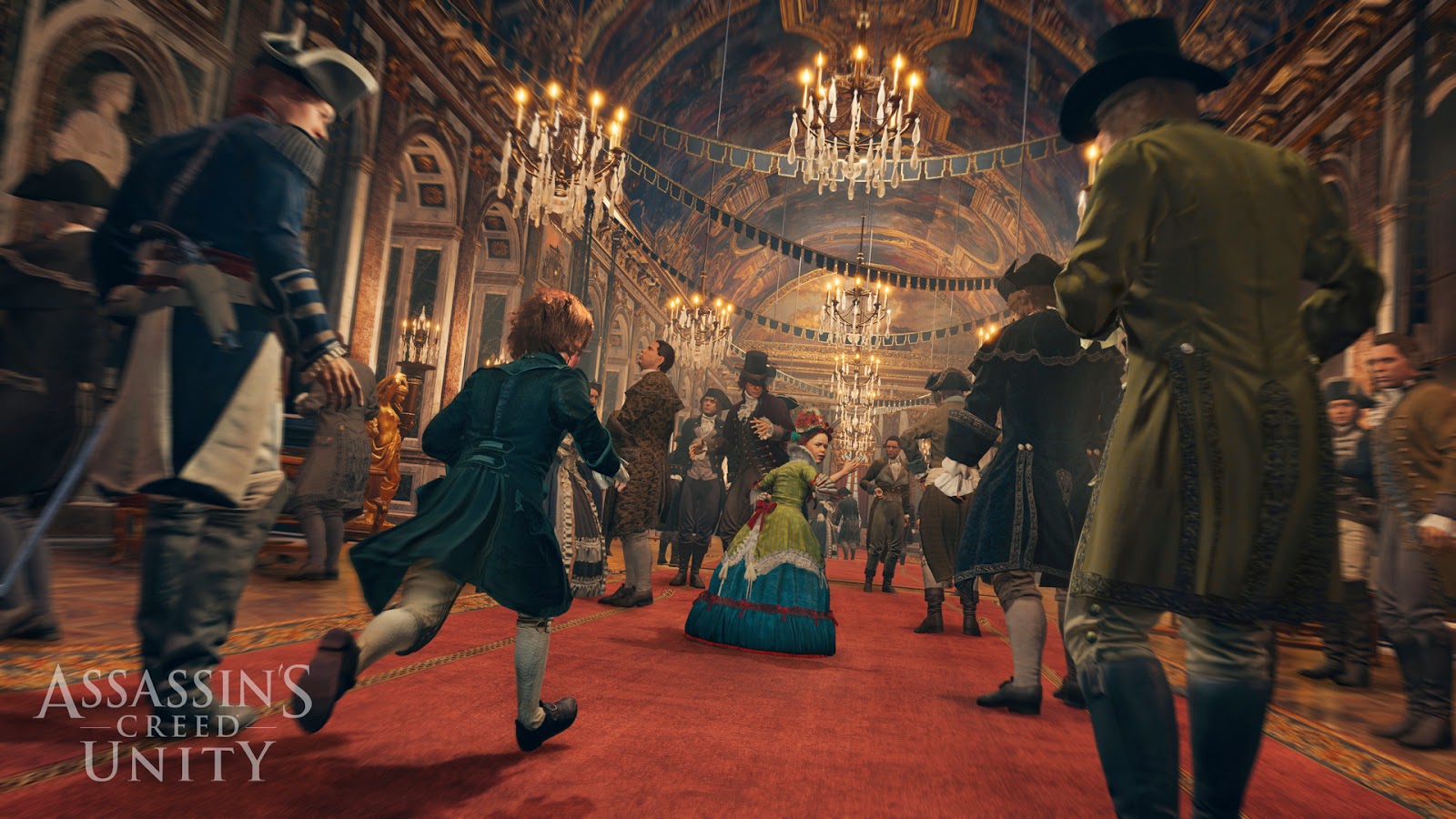What You Need To Know About The French Revolution Before November 11 Launch
November 10, 2014 By Shawn WilliamsThe highly anticipated Assassin's Creed Unity is barely a day away from its official November 11th launch and unlike previous titles. Assassin's Creed Unity will be the first time Ubisoft launch the game exclusively on the PlayStation 4, Xbox One and PC.
This new direction to the long running franchise is set in Paris during the French Revolution and will explore redeveloped systems from movements, combat and environment.
In preparation of the major launch tomorrow, we wanted to give you a quick break down of the history behind the revolution to get you ready for Arno, Unity's main protagonist.
Quick History Behind The French Revolution:
Revolution: A major change
French Revolution: A major change in government that began in 1789; it brought an end to the absolute monarchy and a start to a representative government
Old Regime: A combination of the absolute monarchy and feudalism in France; it included the three estates
Estates: The social classes in the France
First Estate: They consisted of the Roman Catholic Clergy; they received special privileges and paid no direct taxes
Second Estate: They consisted of the Nobles; they received special privileges and paid no direct taxes to the king
Third Estate: They consisted of the bourgeoisie, the san-culottes and the peasants; they paid high taxes and had no special privileges
Bourgeoisie: They were the urban middle-class; they were the merchants/artisans and were well-educated and often wealthy
San-Culottes: They were the urban poor; they were the cooks/servants who were paid low wages and were often out of work
Peasants: They were the rural poor; they were the farmers who paid about half of their income in taxes to the nobles, the church and other agents of the king
Estates-General: The legislative branch of the French government prior to the French Revolution; it could meet only with permission from the king (May 5th, 1789)
Vote by Order: When each estate received one vote; this was favored by the First and Second Estates
Vote by Head: When each representative received one vote; this was favored by the Third Estate
June 17th, 1789: This is the date that the Third Estate voted to leave the Estates-General and form a new body of government for the people of France
National Assembly: This was legislative branch of the government; it proclaimed an end to the absolute monarchy and the start of a representative government
Tennis Court Oath: A promise made by the members of the National Assembly to stay together until they had written a constitution for France; this was the first deliberate act of the revolution (treason)
Louis XVI: He was the king of France at the start of the revolution; he was weak and indecisive
Marie Antoinette: She was the queen of France at the start of the reevolution; she was from Austria and spent too much money on herself
Versailles: A palace built by Louis XIV outside of Paris; it was home to Louis XVI and Marie Antoinette
July 14th, 1789: This is the date that represents the symbolic start of the French Revolution; Parisians stormed the Bastille
Bastille: A medieval fort and prison in Paris used to store gun powder
Fall of the Bastille: Hundreds of hungry people stormed the prison in search of gunpowder to save Paris and the National Assembly; this was the symbolic start of the revolution
August 4th, 1789: This is the date the National Assembly ended the Old Regime, feudalism, church tithes and the special privileges of the First/Second Estates
Liberty, Fraternity, Equality: This was the slogan (battlecry) of the French Revolution
Legislative Assembly: This was the legislative branch of government that was elected in to power and voted to start a war with Austria; it was forced to step down from power
Austria: Hoping to spread their revolutionary ideas, France voted to declare war on this country
National Convention: This was the legislative branch of government that deposed the king of his title, declared France a republic and publically executed the king and queen
Robespierre: The radical leader during the French Revolution responsible for the Reign of Terror; he wanted to create a Republic of Virtue
Reign of Terror: The excessively violent period of time during the French Revolution under the rule of Robespierre
Republic of Virtue: Robespierre's attempt to erase all traces of the monarchy, nobility and the Catholic Church
Marat, Jean-Paul: A radical supporter of the French Revolution who used his newspaper to demand more blood; he was eventually murdered
Danton, George: A radical supporter and close ally of Robespierre who was eventually declared a traitor; he was executed the guillotine
Guillotine: A machine used to behead people; it was suppose to make death quick and painless
Committee of Public Safety: A group of 12 men who decided who was an enemy of the state; those who were, were executed
Directory: A group of 5 men who were given control of France following the Reign of Terror; Napoleon was one of the 5 men
May 5th, 1789: This is the date that the Estates-General was called to order; the 1st and 2nd estate expected to dominate the Estates-General
National Assembly: This was the legislative branch of the government; it ended feudalism, serfdom, taxes to the church and the special privileges of the 1st and 2nd estates
Declaration of the Rights of Man and Citizen: This was the document written by the National Assembly that identified the natural rights of the French citizens as well as their other liberties
Radicals: This group hated the king, wanted drastic and sweeping changes and advocated the use of violence in the name of the revolution
Conservatives: This group liked the king, wanted no more changes and was opposed to violence
Moderates: This group could live with or without the king, wanted some additional changes and supported violence only if it was justified
Our Thoughts
Source: History.com, Quizlet.com





No comments:
Post a Comment